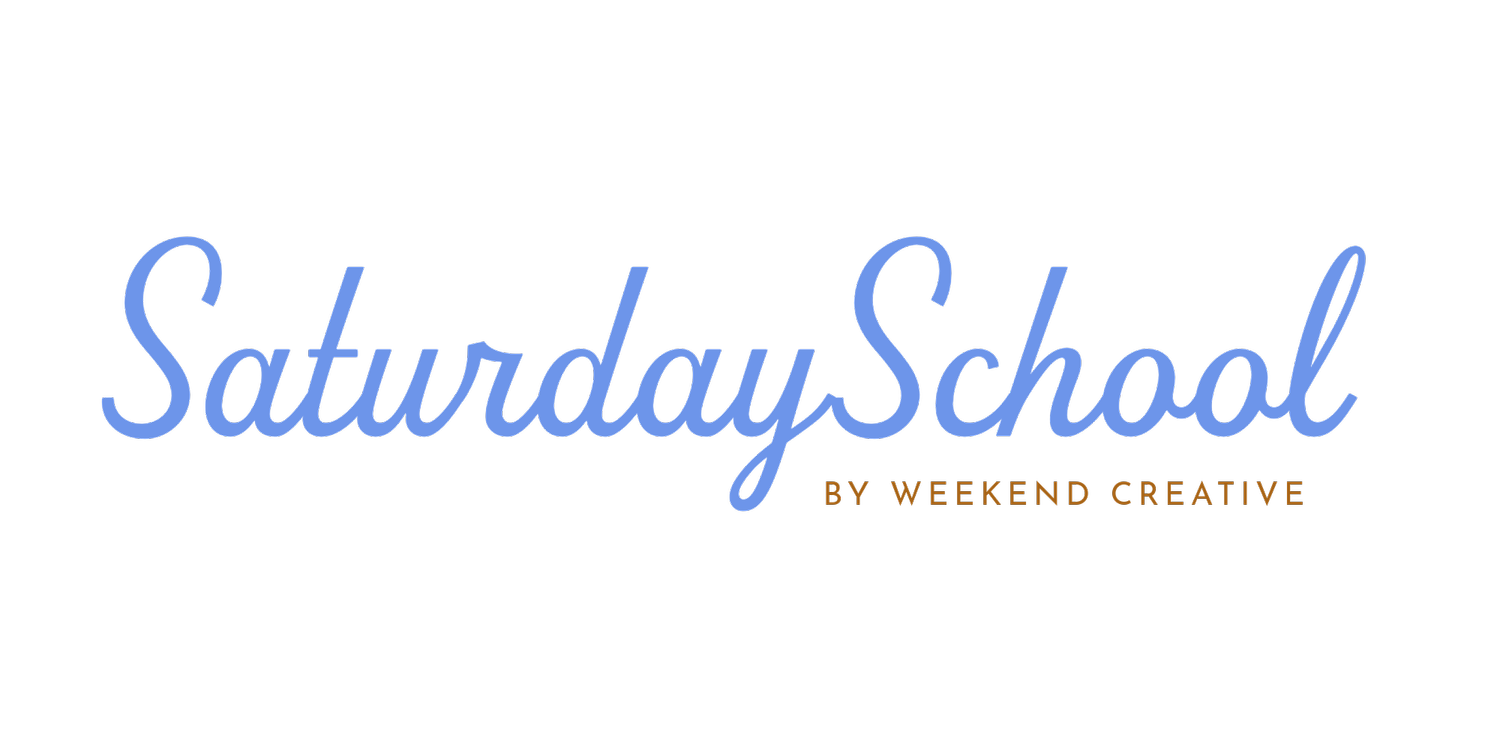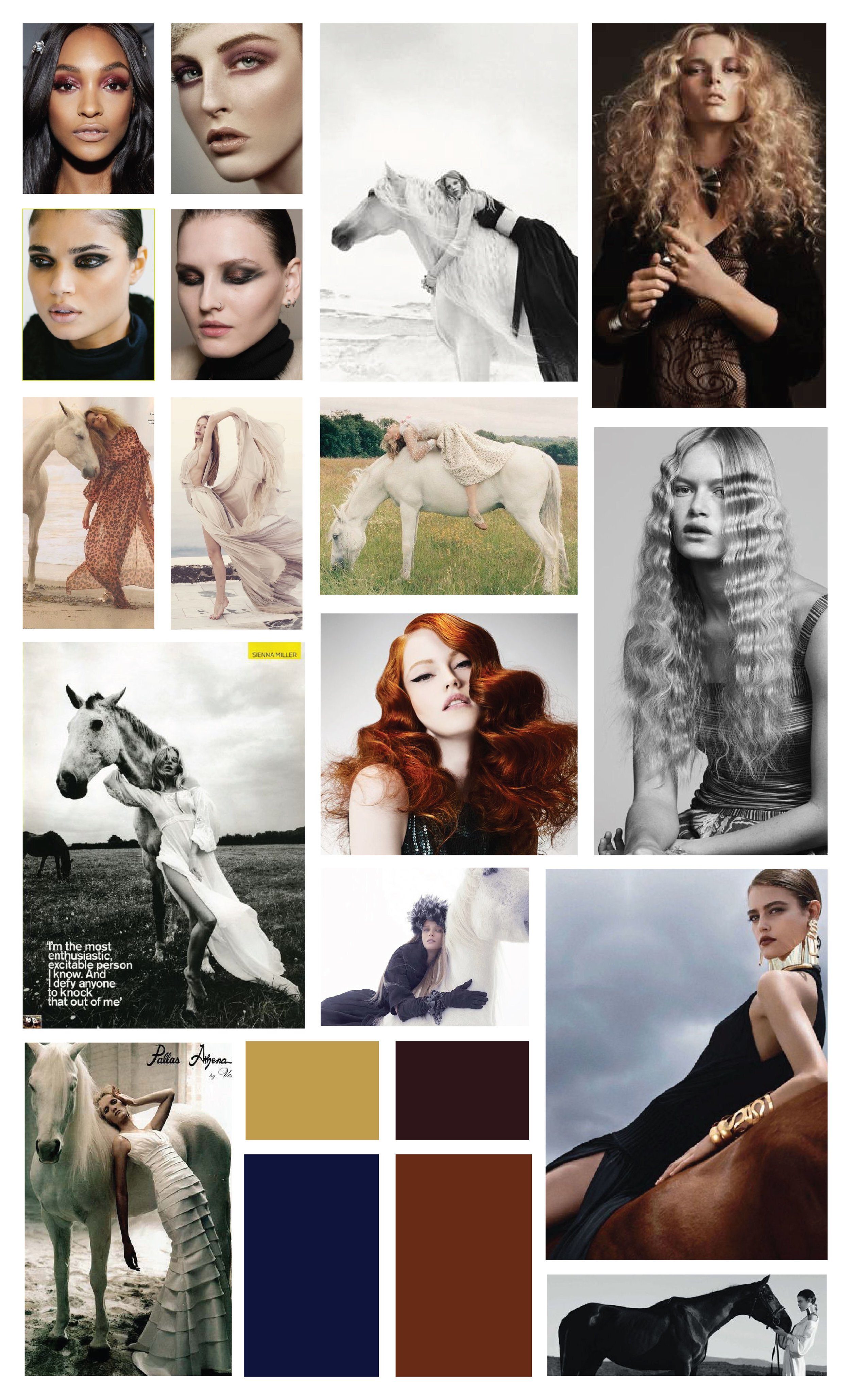Making Mood Boards
My favorite part of any shoot is creating a mood board. It's the time that you get to research, dream, and plan for the shoot. It always makes me so excited for whats coming up. A mood board is essentially a visual representation of the art direction for a shoot with the goal of clearly communicating your vision to the team. A picture is worth a thousand words so instead of trying to describe in words what you are wanting from your team, you can show them with images. It also helps to make sure that all of your ideas are cohesive and match the overall theme because you can see all of your inspiration in one place.
Generally I try to send out a mood board when I am recruiting people for a shoot. It helps them understand what I am looking for, and decide if they are able/wanting to participate. I also always bring a printed version of the mood board to the shoot to reference as the day goes on which helps to keep everything on track. If you are working with a client, you will probably either collaborate on a mood board, or create one for their approval. This is a really good way to understand what their likes and expectations are. Mood boards can also be used to pitch shoot ideas as a way to acquire new clients.
What to include
You will want to include inspiration for basically everything that will be a part of the shoot which will vary depending on what you are shooting. Obviously you won't need to include hair/makeup inspiration if you are shooting products, but you will need to include prop styling ideas. Here is a list of what you might include:
Lighting
Clothing
Location
Poses
Feeling/mood
Colors
Hair
Makeup
Models
Prop ideas/styling
Also make sure to send images of the models to the team once you have them. This will help them to prepare as well as give insight that might change parts of the mood board. For example, the hairstylist might realize that they will need extensions to accomplish the desired hairstyle on the model or the MUA might recommend different colors for the skin tone of the model selected.
Where to find images
Before searching for images, I write out a list of words that describe the shoot and the feeling/mood that I want. If working with a client, I will have them do this as well. These words will help when searching for image, they can be used as a guideline and also as search terms. I also try to picture the shoot and the images that I would want to create before I look at any inspiration. This helps me to avoid copying others and instead look at these images as a way to communicate what is in my head. Once you look at inspiration it can be really hard to be original.
I mostly use Pinterest when searching for shoot inspiration because there is just so much available there. I have found that using the word "editorial" when searching pulls up better images, so I might start by searching "t-shirt" and then search "t-shirt editorial" which pulls up images that are better for shoot inspiration. Its going to take some time to find the right images, and you might have to search several variations of words/phrases. I also use the "more like this" feature. After pinning images I scroll down to see more images that might go along with that particular pin. It's also helpful to add sections to boards so you can separate out the hair pins from the clothing pins, etc.
I also find inspiration images in magazines (I keep folders of images that I like), Instagram, google, and real life. I keep a folder on my phone of images that I think might be useful for shoot inspiration. Google is really helpful when Pinterest comes up short. There have been a few times that I haven't been able to find the inspiration I wanted and so I spent more time writing out detailed descriptions of what I was envisioning.
Putting it together
Before putting together the mood board that will be seen by the team, review all of the images you have collected to narrow down and remove anything that doesn't belong. Remember that less is more. You want to have enough to clearly communicate your vision but not too much or you will overwhelm your team.
The amount needed will depend on how complex the shoot is. If you will have multiple looks with several outfits and hair/makeup/locations, I would recommend making one mini mood board for each look or each model with one larger mood board that captures the overarching feeling and story. For smaller shoots you should be able to fit everything onto a single page, two at the most.
Even if I use a Pinterest board to collect images or collaborate with a client, I will not use it as my actual mood board. It's tricky to narrow down the images there, and I don't want to delete anything I decided to not include in case I change my mind in the future. It's also kind of a pain to share Pinterest boards, especially if some of your team members don't have an account.
The easiest way I have found to make a mood board is to use gomoodboard.com. It's free, just create a new board and then drop in all your images. If you change any images you will have to re-save it for those changes to show up for the rest of your team. You will also have to keep the link in order to find it again since mood boards that you have made aren't kept in an account (definitely a downside). It's also a pain to print mood boards from this site so I usually use it to quickly share images with the team while changes are still being made before making a pdf in Illustrator that is easier to print. One great thing about it is that you can access it from your phone so it's good for on the go. You can also add comments to each image so you can specific what you like or why you included that image which is really useful.
My favorite way to make a mood board is through Illustrator. You could also easily use Photoshop if you are more comfortable with that. You don't have to use a template, you can literally just throw images into a Word document if you want, but I really like how it looks when the images fit together in a pretty way. I take screen shots of the images I want to use and then use clipping masks to fit them into the squares in Illustrator.
Here’s an example of a real mood board and resulting shoot.
Mood Board
Shoot
Remember that mood boards are meant to be inspiration for your shoot and not images to copy. It's important to keep your work original and free of plagiarism which can be hard when you're looking at lots of images. Just keep in mind that you have the ability to create shoots that are just as amazing as anyone else, and you will feel so much prouder of a shoot that really belongs to you. I hope these tips help you plan out your shoots. I love seeing other people's mood boards so feel free to tag us on Instagram so we can see what you are planning.
Is it the weekend yet?
Elle








